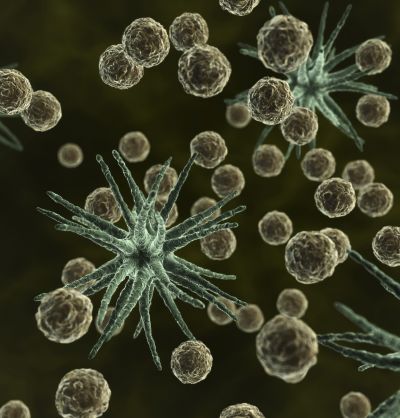In nano-scale
optomechanical cavities, photons bounce off mirrors. Their momentum
becomes amplified enough to cause mechanical deflection of an
oscillator. Exploitation of cavity nanomechanics to sense deflections
has led to realisation of mass and force detectors with unprecedented
sensitivity. However, when the mechanical system is shrunk beyond the
optical wavelength (to sub-wavelength scales), diffraction emerges and
the amplification effect is diminished.
With EU funding, the project 'Operation of cavity optomechanics in
fluids for ultrasensitive mass detection' (OPTONANOMECH) addressed this
and other challenges to pave the way to ultrasensitive measurements
inside individual living cells. Scientists pushed the frontiers through
use of active oscillation to achieve high sensitivity at ambient
temperature and without vacuum conditions.
The nanomechanical resonator is part of a photonic circuit in such a
way that actuation and detection is all-optical. The active oscillation
resulting from regenerative cavity back-action eliminates the need for a
constant alternating current driving force. This approach not only
eliminates the size restriction imposed by electrical connections, more
importantly it solves the diffraction problem and enables unprecedented
sensitivity. This opens the door to novel cavity designs that could
achieve measurements at the quantum limit, the limit on measurement
accuracy at quantum scales due to back-action effects. Without the need
for external excitation, novel sensor designs can be greatly simplified.
Using a semiconductor nanowire-based optical detection system,
scientists were able to detect a few zeptograms (close to the mass of a
proton or hydrogen atom) in fluid with short nanowires. Such sensitivity
would enable detection of single ligand-receptor events, the binding of
molecules to receptors in a lock and key type fashion. Such events are a
pillar of intra- and intercellular signalling. Given that the nanowires
can penetrate the cell membrane, the system is also well-suited to
intracellular drug and gene delivery and intracellular monitoring.
Ultrasensitive mass and force detection at room temperature and in
fluids paves the way to detection of dynamic biological events under
realistic conditions and in real time. Taking that capability out of the
lab and into the clinic will provide a revolutionary new tool for
diagnosis, monitoring and therapy. OPTONANOMECH is paving the way.
 EN
EN  CS
CS DE
DE ES
ES FR
FR HU
HU IT
IT PL
PL PT
PT РУ
РУ SK
SK TR
TR УК
УК AR
AR 中文
中文







